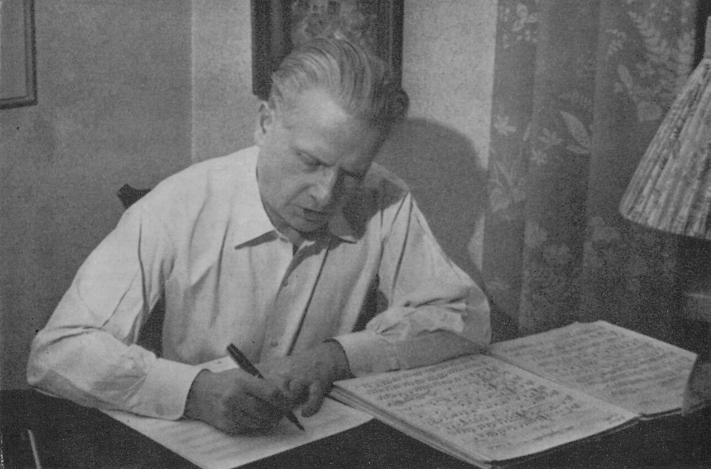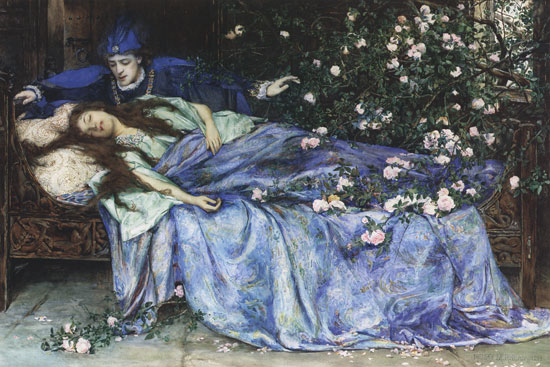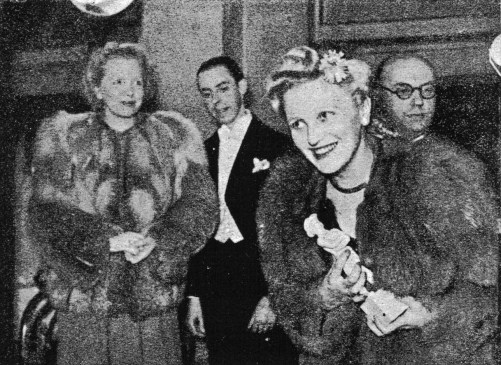|
Sleeping Beauty (1949 Film)
Sleeping Beauty ( fi, Prinsessa Ruusunen) is a Finnish family fantasy film made in 1949, directed by Edvin Laine and produced by T. J. Särkkä. The title part of the film is played by Tuula Usva, the king is played by the director's brother Aarne Laine and the queen is played by the director's wife Mirjam Novero. The film is based on '' Sleeping Beauty'' by the Brothers Grimm and also the play written by Zachris Topelius based on the Grimm's fairy tale. Leo Lehto won the 1949 Jussi Awards The Jussi Awards are Finland's premier film industry prizes, awarded annually to recognize the achievements of directors, actors, and writers. History The first Jussi Awards ceremony was held on 16 November 1944 at the Restaurant Adlon in Hels ... category of the best scenery.Eugen Terttula: Mitä Missä Milloin 1952. Jussi-patsaan saajat 1944–50, pp. 332. Kustannusosakeyhtiö Otava, 1951. References External links * 1949 films Finnish fantasy films Films based on Sleeping ... [...More Info...] [...Related Items...] OR: [Wikipedia] [Google] [Baidu] |
Edvin Laine
Edvin Laine (13 July 1905 – 18 November 1989) was a Finnish film director. Laine was born Bovellán. Laine directed a comedy '' Aaltoska orkaniseeraa'' and family film ''Sleeping Beauty'', both in 1949. '' The Unknown Soldier'', a film Laine directed in 1955 based on Väinö Linna's novel, was a big sensation in Finland. There have later been two other film adaptations of the same novel but Laine's version remains the best known. Laine also directed another film based on Väinö Linna's book, ''Here, Beneath the North Star'' (1968), which also was a successful movie in Finland. His 1958 film ''Sven Tuuva the Hero'' was entered into the 9th Berlin International Film Festival. Three years later, his film ''Skandaali tyttökoulussa'' was entered into the 2nd Moscow International Film Festival. ''Here, Beneath the North Star'' was entered into the 6th Moscow International Film Festival. His 1970 film ''Aksel and Elina'' was entered into the 7th Moscow International Film Festiv ... [...More Info...] [...Related Items...] OR: [Wikipedia] [Google] [Baidu] |
Mirjam Novero
Mirjam Novero (1915–1996) was a Finnish film actress. She was the wife of the director Edvin Laine Edvin Laine (13 July 1905 – 18 November 1989) was a Finnish film director. Laine was born Bovellán. Laine directed a comedy ''Aaltoska orkaniseeraa'' and family film ''Sleeping Beauty (1949 film), Sleeping Beauty'', both in 1949. ''The U ....Soila p.124 Selected filmography References Bibliography * Soila, Tytti. ''The Cinema of Scandinavia''. Wallflower Press, 2005. External links * 1915 births 1996 deaths Actresses from Tampere People from Häme Province (Grand Duchy of Finland) Finnish stage actresses Finnish film actresses {{Finland-actor-stub ... [...More Info...] [...Related Items...] OR: [Wikipedia] [Google] [Baidu] |
Erkki Melartin
Erkki Gustaf Melartin (7 February 1875, Käkisalmi – 14 February 1937, Helsinki) was a Finnish composer, conductor, and teacher of the late-Romantic and early-modern periods. Melartin is generally considered to be one of Finland's most significant national Romantic composers, although his music—then and now—largely has been overshadowed by that of his exact contemporary, Jean Sibelius, the country's most famous composer. The core of Melartin's consists of a set of six (completed) symphonies, as well as is his opera, ''Aino'', based on a story from the ''Kalevala'', Finland's national epic, but nevertheless in the style of Richard Wagner. Melartin's other notable works include the popular wedding tune, ''Festive March'' (1904; from the incidental music to the play, ''Sleeping Beauty''); the symphonic poem, ''Traumgesicht'' (1910); the Violin Concerto in D minor (1913); the Kalevalic symphonic poem for soprano and orchestra, ''Marjatta'' (1914); ''The Blue Pearl'', Finlan ... [...More Info...] [...Related Items...] OR: [Wikipedia] [Google] [Baidu] |
Heikki Aaltoila
Heikki Aaltoila, (11 December 1905, Hausjärvi – 11 January 1992, Helsinki) was a Finnish film composer who served 40 years as the conductor of Finnish National Theatre's orchestra. Aaltoila's best known composition is a romantic waltz called ''Akselin ja Elinan häävalssi'' (Akseli's and Elina's wedding waltz) which originally belonged to the score of the film ''Here, Beneath the North Star'' (1968). He won the Jussi Award for best film score twice. His other film compositions included music for '' Veteraanin voitto'', ''Kvinnan bakom allt ''Four Times Love'' ( sv, Kvinnan bakom allt n Sweden sv, Fyra gånger kärlek n Finland fi, Neljä rakkautta; da, Alt dette og Island med; no, Alt dette – og Island også) is a 1951 co-Nordic film directed by Hampe Faustman and Johan Ja ...'', and '' Prinsessa Ruusunen''. External links * 1905 births 1992 deaths Finnish film score composers Male film score composers 20th-century Finnish composers 20th-century Finn ... [...More Info...] [...Related Items...] OR: [Wikipedia] [Google] [Baidu] |
Finland
Finland ( fi, Suomi ; sv, Finland ), officially the Republic of Finland (; ), is a Nordic country in Northern Europe. It shares land borders with Sweden to the northwest, Norway to the north, and Russia to the east, with the Gulf of Bothnia to the west and the Gulf of Finland across Estonia to the south. Finland covers an area of with a population of 5.6 million. Helsinki is the capital and largest city, forming a larger metropolitan area with the neighbouring cities of Espoo, Kauniainen, and Vantaa. The vast majority of the population are ethnic Finns. Finnish, alongside Swedish, are the official languages. Swedish is the native language of 5.2% of the population. Finland's climate varies from humid continental in the south to the boreal in the north. The land cover is primarily a boreal forest biome, with more than 180,000 recorded lakes. Finland was first inhabited around 9000 BC after the Last Glacial Period. The Stone Age introduced several differ ... [...More Info...] [...Related Items...] OR: [Wikipedia] [Google] [Baidu] |
Family Film
A children's film, or family film, is a film genre that contains children or relates to them in the context of home and family. Children's films are made specifically for children and not necessarily for a general audience, while family films are made for a wider appeal with a general audience in mind. Children's films come in several major genres like Realism (arts), realism, fantasy, adventure film, adventure, war, musical film, musicals, comedy, and literary adaptations. Psychological aspects Children are born with certain innate biological dispositions as a product of long Evolutionary psychology, evolutionary history. This provides an underlying biological framework for what may fascinate a child and also impose limitations on the same. These can be seen in certain universal features shared in children's films.Grodal Torben (2009) Embodied Visions, Oxford University Press. P 27 According to Grodal, films like ''Finding Nemo'' (2003), ''Bambi'' (1942), or Hayao Miyazaki's ''Sp ... [...More Info...] [...Related Items...] OR: [Wikipedia] [Google] [Baidu] |
Fantasy Film
Fantasy films are films that belong to the fantasy genre with fantastic themes, usually magic, supernatural events, mythology, folklore, or exotic fantasy worlds. The genre is considered a form of speculative fiction alongside science fiction films and horror films, although the genres do overlap. Fantasy films often have an element of magic, myth, wonder, escapism, and the extraordinary. Prevalent elements include fairies, angels, mermaids, witches, monsters, wizards, unicorns, dragons, talking animals, ogres, elves, trolls, white magic, gnomes, vampires, werewolves, ghosts, demons, dwarves, giants, goblins, anthropomorphic or magical objects, familiars, curses and other enchantments, worlds involving magic, and the Middle Ages. Subgenres Several sub-categories of fantasy films can be identified, although the delineations between these subgenres, much as in fantasy literature, are somewhat fluid. The most common fantasy subgenres depicted in movies are High Fantasy a ... [...More Info...] [...Related Items...] OR: [Wikipedia] [Google] [Baidu] |
Sleeping Beauty
''Sleeping Beauty'' (french: La belle au bois dormant, or ''The Beauty in the Sleeping Forest''; german: Dornröschen, or ''Little Briar Rose''), also titled in English as ''The Sleeping Beauty in the Woods'', is a fairy tale about a princess cursed by an evil fairy to sleep for a hundred years before being awoken by a handsome prince. A good fairy, knowing the princess would be frightened if alone when she wakes, uses her wand to put every living person and animal in the palace and forest asleep, to waken when the princess does. The earliest known version of the tale is found in the narrative ''Perceforest'', written between 1330 and 1344. Another was published by Giambattista Basile in his collection titled ''The Pentamerone'', published posthumously in 1634 and adapted by Charles Perrault in ''Histoires ou contes du temps passé'' in 1697. The version collected and printed by the Brothers Grimm was one orally transmitted from the Perrault. The Aarne-Thompson classification ... [...More Info...] [...Related Items...] OR: [Wikipedia] [Google] [Baidu] |
Brothers Grimm
The Brothers Grimm ( or ), Jacob (1785–1863) and Wilhelm (1786–1859), were a brother duo of German academics, philologists, cultural researchers, lexicographers, and authors who together collected and published folklore. They are among the best-known storytellers of folk tales, popularizing stories such as "Cinderella" ("), "The Frog Prince" (""), "Hansel and Gretel" ("), "Little Red Riding Hood" (""), "Rapunzel", "Rumpelstiltskin" (""), "Sleeping Beauty" (""), and "Snow White" (""). Their first collection of folk tales, ''Children's and Household Tales'' (), began publication in 1812. The Brothers Grimm spent their formative years in the town of Hanau in the Landgraviate of Hesse-Kassel. Their father's death in 1796 (when Jacob was eleven and Wilhelm was ten) caused great poverty for the family and affected the brothers many years after. Both brothers attended the University of Marburg, where they developed a curiosity about German folklore, which grew into a lifelong de ... [...More Info...] [...Related Items...] OR: [Wikipedia] [Google] [Baidu] |
Zachris Topelius
Zachris Topelius (, ; 14 January 181812 March 1898) was a Finnish author, poet, journalist, historian, and rector of the University of Helsinki who wrote novels related to Finnish history. Given name Zacharias is his baptismal name, and this is used on the covers of his printed works. However, "he himself most often used the abbreviation Z. or the form Zachris, even in official contexts", as explained in the National Biography of Finland. Zachris is therefore the preferred form used in recent academic literature about him. Other spellings used are Sakari and Sakarias. Life and career Early life The original name of the Topelius family was the Finnish name Toppila, which had been Latinized to Toppelius by the author's grandfather's grandfather and later changed to Topelius. Topelius was born at Kuddnäs, near Nykarleby in Ostrobothnia, the son of a physician of the same name (), who was distinguished as the earliest collector of Finnish folk-songs. As a child he heard his mo ... [...More Info...] [...Related Items...] OR: [Wikipedia] [Google] [Baidu] |
Jussi Awards
The Jussi Awards are Finland's premier film industry prizes, awarded annually to recognize the achievements of directors, actors, and writers. History The first Jussi Awards ceremony was held on 16 November 1944 at the Restaurant Adlon in Helsinki. The award is one of the oldest films awards in Europe. The original planned name for the prize was ''Aino'', but Jussi won in the end. The name comes from a character in the 1924 and 1936 Pohjalaisia films. The awards were originally organized by the ''Elokuvajournalistit'' organization, but the task was transferred in the early 1960s to the ''Filmiaura'' organization, composed of around 300 members working in the Finnish film industry. Because of the controversy surrounding the transfer, no awards were handed out in 1960 and 1961. Description The award trophy is a gypsum statuette depicting a standing man with a hat, based on the character of Jussi in the aforementioned films. It was designed by sculptor Ben Renvall. Modernly ... [...More Info...] [...Related Items...] OR: [Wikipedia] [Google] [Baidu] |
1949 Films
The year 1949 in film involved some significant events. Top-grossing films (U.S.) The top ten 1949 released films by box office gross in North America are as follows: Events *April 26–June 21 – Ealing comedies ''Passport to Pimlico'', '' Whisky Galore!'' and ''Kind Hearts and Coronets'' are released in the UK, leading to 1949 being remembered as one of the peak years of the Ealing comedies. *November 15 – Following the prior year's Supreme Court decision in ''United States v. Paramount Pictures, Inc.'', Paramount Pictures is split into two separate companies with the creation of Paramount Pictures Corporation for production-distribution and United Paramount Theaters for the theater operations. *December 21 – Cecil B. DeMille's ''Samson and Delilah'', starring Hedy Lamarr, Victor Mature, George Sanders, Angela Lansbury, and Henry Wilcoxon, receives its televised world premiere at the Paramount and Rivoli theatres in New York City. The film opens in Los Angeles on Janu ... [...More Info...] [...Related Items...] OR: [Wikipedia] [Google] [Baidu] |
.jpg)




